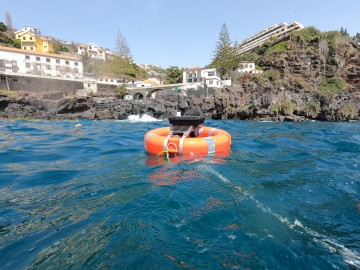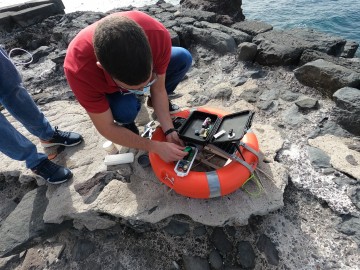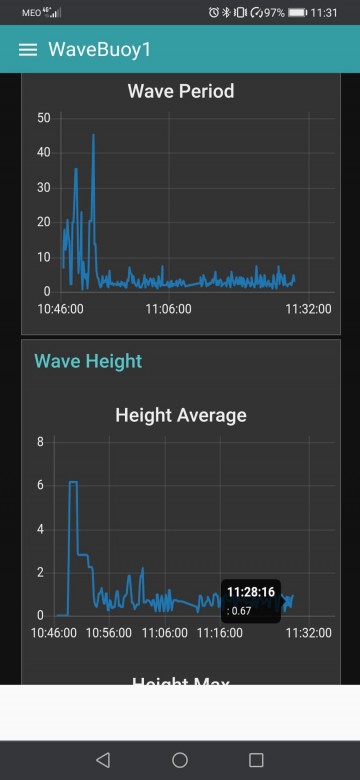Low-Cost Wave Data Buoy
Our investigation of future renewable energy potential on the island of Madeira in the REDEMA project brought forward an exploration of local potential for community-scale ocean wave energy capture in the coastal zone. The preferred future we are working with involves future social, technological and ecological interactions, specifically the scenario of widespread community-scale wave energy harvesting along local coastlines. Far from being simply an imaginary, this vision of the future is grounded as a real possibility. If the trajectories of increasing political will to regulate and enforce and emergent social innovation to reduce energy consumption both continue apace with design and technological development, this widespread use of community-scale renewables is almost a given.

What can we do and make in the present to actually build this future? Using the technique of backcasting, we work backwards from the preferred future to elaborate some concrete steps that small and isolated islands with limited financial resources can take to develop Marine Renewable Energy (MRE) systems. One first step is to bolster local capacity to monitor the ocean waves cheaply and effectively over wider areas of the coastline, to determine the most efficient placements of small-scale (i.e. < 1 Megawatt) wave energy harvesters. To this end, we began development of a low-cost ocean wave data buoy, made with off the shelf components and locally sourced materials. We are packaging this as an open source, DIY kit that can be built at a fraction of the cost of commercial data buoys.

Our monitoring buoy is much cheaper than commercial wave data buoys, and can be used to survey near-shore sites to determine best placement and potential for wave energy capture. The buoy is tethered to the sea floor and carries a technology payload of microcontroller, sensors, data logger plus radio transmitter, batteries and solar panels. The system can measure (i) Significant Wave Height, (ii) period, and (iii) direction, and includes a shore-based radio receiver and gateway with internet connection to our institute servers, and a mobile interface to display wave data in near-real time. Our test buoys are moored in 7-10m of water at Ponta do Lazareto in the Garajau Marine Protected Area (permit 4/2020 H) from the Department of Forestry and Conservation of Nature, Autonomous Region of Madeira.
